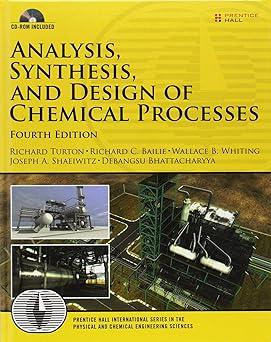A desuperheater permits the temperature of saturated steam entering a heat exchanger to be controlled. This is
Question:
A desuperheater permits the temperature of saturated steam entering a heat exchanger to be controlled. This is accomplished by having a valve that changes the pressure of the source steam to a known value. When the steam pressure is lowered, the steam becomes superheated. If the correct amount of bfw is sprayed into the stream, it can be resaturated, and at the lower pressure, the steam is at a lower temperature.
In a particular heat exchanger, condensing steam in the shell at \(160^{\circ} \mathrm{C}\) is used to heat \(2 \mathrm{~kg} / \mathrm{s}\) of a process fluid from \(50^{\circ} \mathrm{C}\) to \(100^{\circ} \mathrm{C}\). The condensing coefficient is \(5000 \mathrm{~W} / \mathrm{m}^{2} \mathrm{~K}\), and the processside coefficient is \(200 \mathrm{~W} / \mathrm{m}^{2} \mathrm{~K}\). It is required that the process fluid flowrate be increased by \(15 \%\). What steam temperature and flowrate are needed to maintain the outlet process temperature at \(100^{\circ} \mathrm{C}\) ?
Step by Step Answer:

Analysis Synthesis And Design Of Chemical Processes
ISBN: 9780132618120
4th Edition
Authors: Richard Turton, Richard C. Bailie, Wallace B. Whiting, Joseph A. Shaeiwitz, Debangsu Bhattacharyya





